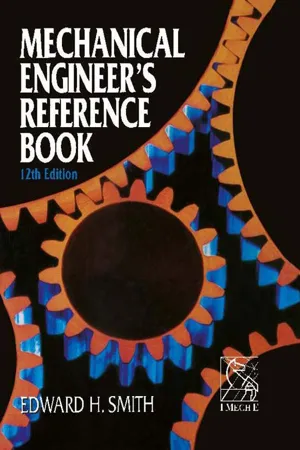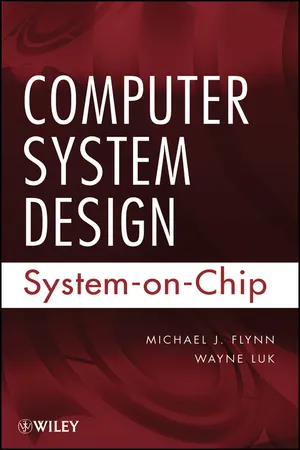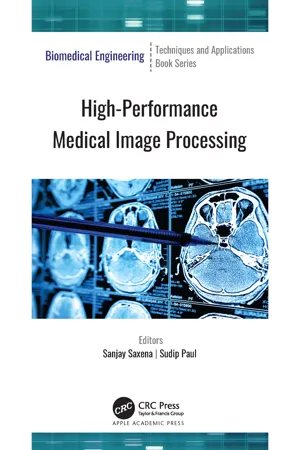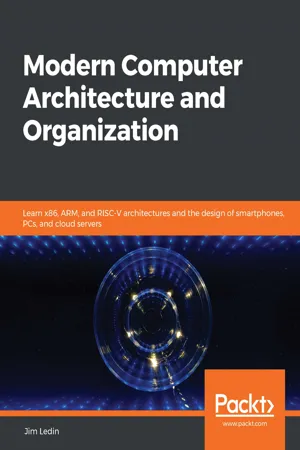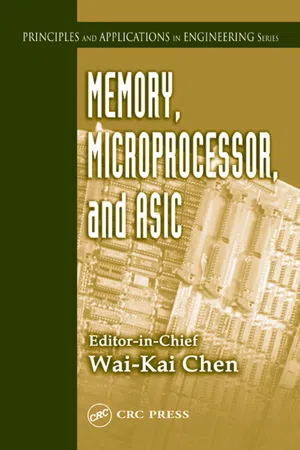Computer Science
Types of Processor
Processors in computer science can be categorized into different types based on their architecture and functionality. Some common types include central processing units (CPUs), graphics processing units (GPUs), and application-specific integrated circuits (ASICs). Each type of processor is designed to handle specific tasks, such as general computing, graphics rendering, or specialized functions, and they vary in terms of performance, power consumption, and cost.
Written by Perlego with AI-assistance
Related key terms
7 Key excerpts on "Types of Processor"
- eBook - ePub
- Edward H. Smith(Author)
- 2013(Publication Date)
- Butterworth-Heinemann(Publisher)
In recent years considerable progress has been made on computers that contain more than one discrete CPU. These are referred to as ‘Multiple processor computers’. The main area of difficulty in the development of these machines has not been in the physical co-location of processors but rather in the design of the operating system. It has to know which instructions can be operated upon simultaneously and which require prior instructions to be completed. It should also be noted that multiple processor computers can operate in two distinct modes. In ‘parallel’ processing each processor is operating on the same instruction at the same time. This is particularly useful in fail-safe or non-stop critical applications. In ‘multi’ processing, each processor is operating on a different instruction and each instruction is processed once only. This does not give the ‘fail-safe’ advantages, but does provide large gains in speed of processing overall.4.4.2 Input/output
This is the structure which provides optimum communication between the CPU and other parts of the system.4.4.3 Peripherals
These are the devices external to the CPU and memory which provide bulk storage, human/machine interaction and communication with other electronic systems.4.4.4 BUS paths
These act as the vehicle for the passing of data and program instructions between all other parts.4.5 Categories of computer systems
In going from microcomputer to large-data processing systems there are many differences in complexity, technology, system cost or performance. However, there are many similarities between systems from different manufacturers.Several distinct categories of computer system can be identified. Going from least to most comprehensive and powerful, these are described in subsequent sections.4.5.1 Pocket computers
These derive their name from their ability to literally fit into their owners‘ pockets! Though some early prototypes were available to a limited market, they first made a general appearance in 1990. They are typically of two-piece construction with one section folding over the other. Normal facilities include an LCD screen, a reduced-size keyboard (though with a full key set) and removable self-powered memory cards that act as logical disk drives. Many also include an internal modem or the ability to interface with an external one. They provide most of the features of laptop or personal computers without the size or weight penalties. They are ideal for carrying, in a briefcase and for use on long journeys on public transport. - eBook - ePub
IT Career JumpStart
An Introduction to PC Hardware, Software, and Networking
- Naomi J. Alpern, Joey Alpern, Randy Muller(Authors)
- 2011(Publication Date)
- Sybex(Publisher)
Chapter 1 The Computer’s Brain: Processors and Memory- Processor performance
- Processor types
- History and evolution of Intel processors
- Intel’s competition—AMD, multiprocessor computers
- Physical memory
- Bus architecture and bus types
pro•cess v : to complete a series of actionsEvery computer consists of a microprocessor and memory. Without the two, the computer would not function. The microprocessor, commonly referred to as the central processing unit (CPU), is the brain of the computer. Like the human brain, the CPU is responsible for managing the timing of each operation and carrying out the instructions or commands from an application or the operating system.The CPU uses memory as a place to store or retrieve information. Memory comes in several forms, such as random access memory (RAM) and read-only memory (ROM). Memory provides a temporary location for storing information and contains more permanent system configuration information.Introduction to ProcessorsThe most central component to the computer is the processor. It is responsible for executing the instructions that are given to the computer. The processor determines the operating systems you can use, the software applications you can run on the computer, and the computer’s ability and performance. It is also typically one of the major factors in computer cost. Computers that contain newer and more powerful processors are more expensive than computers with less complex processors. This has led processor manufacturers to offer several different lines of processors for the home user, business workstation, and server markets.Processor PerformanceThe goal of processor performance is to make applications run faster. Performance is commonly defined by how long it takes for a specific task to be executed. Traditionally, processor performance has been defined as how many instructions can be completed in each clock cycle, or instructions per clock (IPC), times the number of clock cycles. Thus, performance is measured as - eBook - ePub
Computer System Design
System-on-Chip
- Michael J. Flynn, Wayne Luk(Authors)
- 2011(Publication Date)
- Wiley(Publisher)
3 Processors3.1 INTRODUCTIONProcessors come in many types and with many intended uses. While much attention is focused on high-performance processors in servers and workstations, by actual count, they are a small percentage of processors produced in any year. Figure 3.1 shows the processor production profile by annual production count (not by dollar volume).Figure 3.1 Worldwide production of microprocessors and controllers [227].Clearly, controllers, embedded controllers, digital signal processors (DSPs), and so forth, are the dominant processor types, providing the focus for much of the processor design effort. If we look at the market growth, the same data show that the demand for SOC and larger microcontrollers is growing at almost three times that of microprocessor units (MPUs in Figure 3.2 ).Figure 3.2 Annual growth in demand for microprocessors and controllers [227].THIS CHAPTER AND PROCESSOR DETAILSThis chapter contains details about processor design issues, especially for advanced processors in high-performance applications. Readers selecting processors from established alternatives may choose to skip some of the details, such as sections about branch prediction and superscalar processor control. We indicate such sections with an asterisk (*) in the section title.Such details are important, even for those selecting a processor, for two reasons:Readers interested in application-specific instruction processors, introduced in Section 1.3, can find relevant material in Sections 6.3, 6.4, and 6.8.1. Year by year, SOC processors and systems are becoming more complex. The SOC designer will be dealing with increasingly complex processors.2. Processor performance evaluation tool sets (such as SimpleScalar [51]) provide options to specify issues such as branch prediction and related parameters.Especially in SOC type applications, the processor itself is a small component occupying just a few percent of the die. SOC designs often use many different Types of Processors suiting the application. Often, noncritical processors are acquired (purchased) as design files (IP) and are integrated into the SOC design. Therefore, a specialized SOC design may integrate generic processor cores designed by other parties. Table 3.1 - eBook - ePub
Computer Architecture
Fundamentals and Principles of Computer Design, Second Edition
- Joseph D. Dumas II(Author)
- 2016(Publication Date)
- CRC Press(Publisher)
chapter threeBasics of the central processing unit
The central processing unit (CPU) is the brain of any computer system based on the von Neumann (Princeton) or Harvard architectures introduced in Chapter 1 . Parallel machines have many such brains, but normally each of them is based on the same principles used to design the CPU in a uniprocessor (single CPU) system. A typical CPU has three major parts: the arithmetic/logic unit (ALU), which performs calculations; internal registers, which provide temporary storage for data to be used in calculations; and the control unit, which directs and sequences all operations of the ALU and registers as well as the rest of the machine. (A block diagram of a simple CPU is shown in Figure 3.1 .) The control unit that is responsible for carrying out the sequential execution of the stored program in memory is the hallmark of the von Neumann–type machine, using the registers and the arithmetic and logical circuits (together known as the datapath ) to do the work. The design of the control unit and datapath have a major impact on the performance of the processor and its suitability for various types of applications. CPU design is a critical component of overall system design. In this chapter, we look at important basic aspects of the design of a typical general-purpose processor; in the following chapter, we will go beyond the basics and look at modern techniques for improving CPU performance.3.1 The instruction set
One of the most important features of any machine’s architectural design, yet one of the least appreciated by many computing professionals, is its instruction set architecture (ISA). The ISA determines how all software must be structured at the machine level. The hardware only knows how to execute machine language instructions, but because almost all software is now developed in high-level languages rather than assembly or machine language, many people pay little or no attention to what type of instruction set a machine supports or how it compares to those used in other machines. As long as the system will compile and run a C++ program or support a Java virtual machine, is its native machine language really all that important? If all you are concerned with is getting a given program to run, probably not. But if you are interested in making a system perform to the best of its abilities, then it behooves you to know what those abilities really are, and the only ability of a CPU that really matters is its ability to execute machine instructions. What those instructions are, what they do, and how they support your high-level task can have a great deal to do with how quickly and efficiently that task will be done. Thus, it is worthwhile to study the similarities and differences between ISAs in order to be able to pick the best system for a given application. We examine important features of computer ISAs in this section. - eBook - ePub
- Sanjay Saxena, Sudip Paul(Authors)
- 2022(Publication Date)
- Apple Academic Press(Publisher)
The usage of several cores decides the name, for example, if two processors are integrated on a single silicon chip it is a dual-core processor (processing capacity is depending on design, like 32, 64) vice versa. Figure 4.16 illustrates the idea of the core distribution. The major task is the CPU has to coordinate with all the cores for proper handling of tasks. FIGURE 4.16 Illustration of processor cores in multi-core chips. Figure 4.17 shows today’s top supercomputers in the market and their corresponding number of cores used; it shows that the usage of processing cores is increasing widely. The major thing is communication between the cores and resources without degrading the performance of the system. Figure 4.18 shows some of the parallel computing architectures to achieve the same. 4.9.2 MULTITHREAD Thread: Process with own instructions and data, it may be a part of a parallel program of a multiprocessor or maybe an independent program. FIGURE 4.17 Illustration of processing core usage in supercomputers, ©Statista 2020. FIGURE 4.18 Parallel computer architectures: (a) on-chip parallelism; (b) a coprocessor level; (c) a multiprocessor level; (d) a multicomputer level; and (e) a grid level. Multithread: Multiple threads to share the functional units of one processor via overlapping. The processor must duplicate the independent state of each thread, for example, a separate copy of the register file, a separate core, and for running independent programs, a separate page table. In multithread execution thread switching, like an alternate thread for every clock should run - eBook - ePub
Modern Computer Architecture and Organization
Learn x86, ARM, and RISC-V architectures and the design of smartphones, PCs, and cloud servers
- Jim Ledin(Author)
- 2020(Publication Date)
- Packt Publishing(Publisher)
Chapter 3 : Processor ElementsThis chapter begins our development of a comprehensive understanding of modern processor architectures. Building upon the basic digital circuits introduced in Chapter 2 , Digital Logic, we discuss the functional units of a simple, generic computer processor. Concepts related to the instruction set and register set are introduced, followed by a discussion of the steps involved in instruction loading, decoding, execution, and sequencing. Addressing modes and instruction categories are discussed in the context of the 6502 architecture. The need for processor interrupt handling is introduced, using the example of 6502 interrupt processing. The standard approaches modern processors employ for input/output (I/O ) operations are introduced, including direct memory access.After completing this chapter, you will understand the basic parts of a processor and the structure of processor instruction sets. You will have learned the Types of Processor instructions, why interrupt processing is necessary, and will understand I/O operations.The following topics will be covered in this chapter:- A simple processor
- The instruction set
- Addressing modes
- Instruction categories
- Interrupt processing
- Input/output operations
A simple processor
The 6502 processor architecture and a small subset of its instructions were introduced in Chapter 1 , Introducing Computer Architecture. In this section, we will build upon that introduction to present the generic functional components universally employed in processor architectures, from the tiniest embedded controllers to the most powerful server CPUs.The integrated circuit at the core of a computer system goes by a few different names: the Central Processing Unit (CPU - eBook - ePub
- Wai-Kai Chen, Wai-Kai Chen(Authors)
- 2003(Publication Date)
- CRC Press(Publisher)
11 ArchitectureDaniel A.Connors
University of Illinois at Urbana- ChampaignWen-mei W.Hwu
University of Illinois at Urbana- Champaign11.1 Introduction 11.2 Types of Microprocessors 11.3 Major Components of a Microprocessor Central Processor • Memory Subsystem • System Interconnection 11.4 Instruction Set Architecture 11.5 Instruction-Level Parallelism Dynamic Instruction Execution • Predicated Execution • Speculative Execution 11.6 Industry Trends Computer Microprocessor Trends Embedded • Microprocessor Trends Microprocessor Market Trends11.1 Introduction
The microprocessor industry is divided into the computer and embedded sectors. Both computer and embedded microprocessors share aspects of computer design, instruction set architecture, organization, and hardware. The term “computer architecture” is used to describe these fundamental aspects and, more directly, refers to the hardware components in a computer system and the flow of data and control information among them. In this chapter, various types of microprocessors will be described, fundamental architecture mechanisms relevant in the operation of all microprocessors will be presented, and microprocessor industry trends discussed.11.2 Types of Microprocessors
Computer microprocessors are designed for use as the central processing units (CPU) of computer systems such as personal computers, workstations, servers, and supercomputers. Although microprocessors started as humble programmable controllers in the early 1970s, virtually all computer systems built in the 1990s use microprocessors as their central processing units. The dominating architecture in the computer microprocessor domain today is the Intel 32-bit architecture, also known as IA-32 or X86. Other high-profile architectures in the computer microprocessor domain include Compaq-Digital Alpha, HP PA-RISC, Sun Microsystems SPARC, IBM/Motorola PowerPC, and MIPS.
Index pages curate the most relevant extracts from our library of academic textbooks. They’ve been created using an in-house natural language model (NLM), each adding context and meaning to key research topics.
